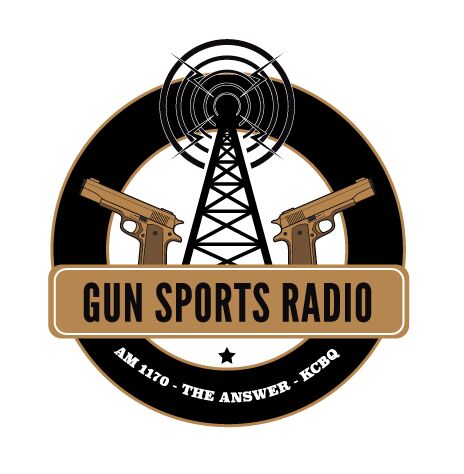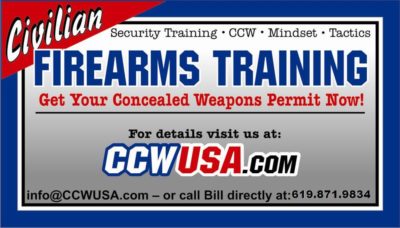CALIFORNIA – THE LEADER IN BAD GUN LAWS
More and more states are implementing increasingly restrictive gun laws that do not address actual gun violence or crimes. These failed gun control measures are enacted partially due to media hysteria and a lack of knowledge or willful ignorance of the issues.
This ignorance allows our State Legislature to propose and enact gun control laws that accomplish very little. This article highlights just a few of California’s gun control laws that do not achieve their intended goal or purpose.
California’s Roster of Certified Handguns for Sale
The Law:
California has established a list of handguns approved for sale by California Federal Firearms Licensed (FFL) dealers (gun stores). (Penal Code, § 32000.) This list is commonly known as the “California Handgun Roster.” If the exact gun is not listed, the FFL cannot sell the gun to anyone in California (excluding some exempt categories like law enforcement). And when we say “exact gun,” we mean exact. When placed on the California Handgun Roster, the gun’s model number, type, color, barrel length, and caliber are listed. To be legally sold in California, the gun must be listed on the California Handgun Roster with these exact features. If there are two different colors or two different calibers for the same model, the California Department of Justice must approve and place it on the list before it can considered safe to be sold.
For example, a stainless steel (silver) .357 Colt Python with a 6” barrel is considered “safe for sale” in California because it is listed on the California Handgun Roster. However, a blue .357 Colt Python with a 6” barrel is considered “unsafe.” Everything about these two guns is exactly the same, except for the color. However, in California, one is considered safe, the other is not.
The Intent:
The Legislature’s intent in passing this law is to ensure that handguns being sold by licensed dealers are safe. It was an attempt to block the sale of firearms that were manufactured with low quality features or inadequate safety standards. Some refer to these small, low caliber, and inexpensive handguns as “Saturday Night Specials.”
The Flaws:
On paper, no one would argue with a law that ensures guns are manufactured with high standards. However, there are already industry standards and product liability laws that prevent firearm manufacturers from making firearms that are mechanically unsafe. Additionally, what was once a list of guns regulated for safety is now a list of guns that are restricted based on arbitrary characteristics that have nothing to do with safety. The California Handgun Roster excludes thousands of gun sales based on the color, barrel length, or caliber. These characteristics do not affect the safety of a gun.
California’s arbitrary determinations for adding handguns to the California Handgun Roster are just another way to restrict the number guns sold in California. It also allows California to collect extra fees from the manufacturers because every application for each variation of a gun to be placed on the list must be accompanied by multiple prototypes of the gun and a monetary fee. (Penal Code, § 32010.) The application is reviewed every few years, and a fee must be paid for each gun being renewed on the Roster, even if it is the same model but a different color. Another issue related to the California Handgun Roster is microstamping, discussed below.
Microstamping
The Law:
California’s microstamping law states that any new application/addition to the California Handgun Roster must have approved microstamping technology as part of the gun before it is eligible to be sold in California. (Penal Code, § 31910.) Any variation of a gun model that is already on the California Handgun Roster must also include microstamping technology or it cannot be placed on the Roster. Today, no new handgun may be added to the Roster, unless it has microstamping.
Microstamping is the process in which a serial number is micro-engraved on to the firing pin or extractor of a handgun. Therefore, whenever a round is fired from that microstamped gun, the gun’s unique serial number is imprinted on the primer of the cartridge (i.e., the serial number is stamped onto the casing of the bullet).
The Intent:
The Legislature’s intent is that microstamping would aid law enforcement and investigators in tracking down criminals that used a microstamped handgun in a crime. The theory was that someone would commit a crime with a microstamped gun, and the casing of the bullet would be stamped with the serial number of the gun. During the investigation, if the police acquired the spent casing, they would be able to track the registered gun owner through the serial number stamped on the bullet casing. (California firearms are registered to owners on a state-run database when they are purchased from both FFL dealers and private individuals. Therefore, the gun owner can be looked up through the serial number of the gun.) The microstamping law was not to be implemented until there was viable microstamping technology on the market. The California Attorney General has concluded microstamping has become viable; and microstamping restrictions are in place in California.
The Flaw:
First, although this law is applied through the California Handgun Roster, the microstamping mandates have nothing to do with the mechanical safety of the firearm. Microstamping does not prevent negligent discharges, accidental shootings, or ensure permitted use of the firearm. This is an investigative tool that has no effect on the safe operation of the handgun. However, in order for a handgun to be considered “safe for sale” in California, it must have microstamping technology.
Second, in theory, microstamping technology may be viable, but in practice it is not viable in the firearms industry. Generally speaking, it is possible to microstamp small objects and parts. However, currently no manufacturer can or will implement microstamping because it is cost prohibitive, impractical, and functionally impossible.
To incorporate microstamping, each manufacturer must develop and implement separate machinery that imprints a distinct, one-of-a-kind serial number on every firing pin on each gun manufactured specifically for handguns sold in California. Additionally, a different machine would likely be needed to microstamp each different model of handgun produced by the manufacturer, because each model may have a different type of firing pin, may be made with different materials, or have different surfaces. Most manufacturers offer a large variety of gun models. The machinery itself is also cost prohibitive. Gun manufacturers do not operate on high margins as it is; and thus, the new technology makes it even tougher to operate a viable business.
Third, even if a gun has microstamping technology, is does not address the issue of stolen firearms being used in crimes. The only person being tracked in that case is the robbery victim. This may provide investigators with additional leads; however, this does not seem to be a common occurrence. Thus, microstamping does not solve the problem of stolen firearms used in crimes.
Fourth, once the microstamped gun is purchased, a two-dollar file can rub off the serial number on the firing pin, thus halting all ability to track down the shooter through the technology. This type of alteration requires minimal level of knowledge on how the gun operates and no gunsmithing skills.
Further, after purchasing a microstamped gun, the owner can simply buy another firing pin from another state that does not have any microstamping requirements and swap out the firing pins. Such alterations likely would be illegal, but if a person is going to use a firearm in a crime, it is unlikely this will stop them as criminals routinely file off the serial numbers of stolen guns.
Fifth, general wear from use of the firearm is inevitable. Gun parts must be routinely replaced because they break or wear over time. Therefore, the gun’s microstamping will wear off due to general use of the firearm. If that occurs, is the gun owner required to take a microscope and check the firing pin to make sure the microstamp is still legible? Is the gun owner required to inform the manufacturer when this happens? Is the manufacturer required to supply a new firing pin with the original microstamped number? None of these questions have been answered by the microstamping law, yet all of them have major implications for the gun owner and manufacturer.
Sixth, if a person is planning to commit a crime using a microstamped gun, what is going to stop the person from going to a gun range and picking up one hundred different casings fired by one hundred different people and throwing all the casings on the ground at the scene of the crime? If each of these bullet casings has a different microstamped serial number tying them to a different gun owner, this situation would cripple to law enforcement investigations.
Enormous amounts of time and money would be wasted chasing down completely innocent gun owners that had nothing to do with the crime committed. These issues also have Fourth Amendment search and seizure implications. If these innocent gun owner’s casings are found at a crime scene, does law enforcement now have probable cause to obtain a warrant, search their homes, arrest them, and confiscate their firearms because they are now a suspect in a crime? These individuals must now defend themselves in court. Even if charges are ultimately dropped, they still must invest huge amounts of time and money to hire representation, get their firearms returned (which can take years), and explain their arrest record to future employers.
California’s 10-Day Wait and One Handgun per 30 Day Rules
The Law:
When purchasing a handgun in California, the buyer must wait 10 days after filling out and passing the background check before they are allowed to take possession of the gun. (Penal Code, § 26815.) This applies even if they were instantly cleared by the background check system. Additionally, an individual can only purchase one handgun every thirty days (or “thirty- 24 hour periods of time”). (Penal Code, § 27535.)
The Intent:
The 10-day wait is intended to provide a “cooling off” period for those people who purchased a firearm while they were incensed due to various circumstances. Examples include revenge for infidelity or a domestic violence incident.
The law also intends to prevent people considering suicide from purchasing a gun for the sole purpose of committing suicide. This 10-day wait is intended to give the person a “cooling off period,” so the person can change their mind about a planned murder or suicide.
California also has said that the 10-day wait allows the state to conduct additional investigations on an individual attempting to purchase a firearm. However, the state has admitted this further investigation does not occur unless the “occasional” situation occurs where an outside source happens to provide the state with further information on the purchaser that may change the result of the background check during the 10-day waiting period.
The one handgun per thirty days rule is intended to keep criminals from buying numerous handguns at once, and then using them in a crime or illegally selling them to other criminals.
The Flaw:
As to the 10-day wait, there is little evidence the rule has helped to or stopped, any crime. The law also overlooks individuals who already own a firearm. When questioned regarding the applicability of the law on individuals who already own a gun, the State of California has admitted that they have offered no evidence that the law prevents any crime. (See Oral Arguments, Silvester, et al. v. Harris, et al. 14-16840.) The following quote comes from the oral arguments from Silvester v. Harris:
Court: In making this line of argument about the general fit, are you conceding the state did not prove the specific fit against the plaintiffs?
Appellants: No your Honor we are not conceding that.
Court: What evidence do you have in the record about the specific fit? Because obviously if somebody already has a handgun then the question about impulsiveness somewhat goes away, they are already in possession of a handgun…
Appellant: We do not have a study that specifically focuses on the effect of a waiting period on subsequent purchasers. We have the studies that focus on the effect of the waiting period on the general population. (Oral Arguments, Silvester, et al. v. Harris, et al. 14-16840).
If someone already owns a gun and plans to commit a crime, why would they buy a new gun, just to commit the crime? If they have to wait 10 days for their new gun, why wouldn’t they just use the gun they already have? In short, the 10-day “cooling off” period does not work for anyone who already owns a gun or has access to a gun. Clearly, if an individual plans to kill another, it is highly unlikely waiting 10 days will prevent them from doing it.
The one handgun per thirty-day law is an attempt to fight crime through impatience. According to the law, criminals are too impatient to buy their guns once a month. Regardless, if you have a record, you will not be able to legally buy a gun from a Federal Firearms Licensed dealer or private party in California. Therefore, the law restricts law-abiding individuals from buying more than one gun at a time. In fact, California is considering new legislation that would restrict people from purchasing more than 12 firearms per year of any kind, regardless if they are handguns, rifles, or shotguns. (See California Assembly Bill 1674.)
If your background check takes more than a few hours or days to clear, then you should have to wait until it clears. However, if your background check clears immediately, what benefit is accomplished by making you wait 10 days? There is none.
Assault Weapons Ban (Semi-Auto Centerfire Rifles with Detachable Magazines)
The Law:
Not including the list of guns specifically listed as “assault weapons” and banned from California by name, California law defines “assault weapons” based on various features. An assault rifle is “a semiautomatic, centerfire rifle that has the capacity to accept a detachable magazine and any one of the following features: (1) a pistol grip; (2) a thumbhole stock; (3) a folding or telescoping stock; (4) a grenade or flare launcher; (5) a flash suppressor; (6) a forward pistol grip; (7) a semiautomatic centerfire rifle that has a fixed magazine with the capacity to accept more than ten rounds; or (8) a semiautomatic centerfire rifle that has an overall length of less than 30 inches. (Penal Code, §§ 30510-30515.)
California also has “assault weapon” laws that categorize different pistols and shotguns into the assault weapon category based on similar definitions, but we will address only rifles in this article.
The Intent:
The intent of California’s “assault weapons” law is to eliminate “dangerous military grade weapons that can shoot hundreds of rounds in a second.”(See California Senate Bill 23.) This ban was the first of its kind; and the first form was implemented after a school shooting in Stockton, California where five people were killed and 29 others wounded. The law is known as the Roberti-Roos Assault Weapons Control Act of 1989. Over the years, this law has been amended to form California’s current “assault weapons” laws.
Arguably, the law attempts to ban a large number of widely used firearms from civilian ownership. However, for purposes of this article, it is assumed that California’s intent of getting dangerous guns off the streets is the “true intent.”
The Flaw:
A quick review of California’s definitions of “assault weapons” shows that purely cosmetic features determine whether or not a gun is considered an assault weapon. There is nothing in the definition that addresses the function, rate of fire, ballistics, or safety mechanisms of the firearm aside from the restriction on grenade launchers (however, this are already banned through other laws restricting destructive devices).
In California, you cannot own an AR-15 that has these features unless you add a “bullet button” to the firearm or purchase a variant of these rifles that do not have the listed features. The bullet button was created to allow for the ownership/use of a rifle that had banned features by altering the magazine catch of the rifle so the magazine would not be able to be removed without the use of a tool; and thus, the bullet button
converted “detachable magazines” to “fixed magazines” making the particular rifle legal in California.
Under California law, this ten dollar part separates gun owners from felons. However, even if an individual has a bullet button on their rifle, but they use a 30-round magazine in their rifle, they have now converted their legal rifle into an illegal “assault weapon” and can be charged with possession of an assault weapon and the manufacturing of an assault weapon. These are two separate criminal charges for gun owners due to a misunderstanding of a technicality of the law.
Generally, when society hears the term “assault weapon,” the image is a machine gun continuously firing massive amounts of ammunition with a single pull of a trigger. Clearly, this is not the case because states like California identify normal rifles used in shooting sports, recreation, hunting, and self-defense as “assault weapons” based on cosmetic features. There are countless legal rifles that have the same rate of fire and use the same ammunition as an AR-15 (many hunting rifles use much larger ammunition than the round commonly used in AR15s – the .223/.556 round). However, California law states that some are legal and others are illegal “assault weapons.” In fact, the exact same model of a rifle can be considered both a legal rifle and an illegal “assault weapon” in California simply by adding an extra grip or cosmetic accessory. For example, the Ruger Ranch Hand is a legal rifle in California, but would be considered an “assault rifle” if an extra grip is installed on the front of the rifle or if the barrel is .1 inch shorter than 16 inches.
These complex legal technicalities result in individuals unknowingly breaking the law and suffering prosecution because of it. Unfortunately, these technicalities have very little effect on preventing crime, if at all.
Ban on the Sale of 30 Round Magazines, Rebuild Kits, and Extensions
The Law:
In California, the law states a person who manufactures or causes to be manufactured, imports into the state, keeps for sale, or offers or exposes for sale, or who gives, or lends, any large-capacity magazine” is guilty of a crime. This restriction includes magazine “rebuild kits,” (e.g., a disassembled magazine sold as parts). (Penal Code, § 32310.)
The Intent:
The California Legislature believes by limiting the amount of ammunition a gun magazine can hold, it can decrease the number of victims in firearms-related crimes because the shooter will either run out of ammunition or must reload another magazine, allowing for victims to escape or tackle the shooter.
The Flaw:
There is little evidence that limiting the capacity of a gun magazine decreases murder or gun murder. (See Moody, Carlisle E, Large Capacity Magazines and Homicide, College of William and Mary Department of Economics, Working Paper 160, February 2015.) In fact, multiple scientific studies have concluded that large capacity magazine laws have not produced a clear impact on gun violence.1 Further, a study by J.A. Roth and C.S. Koper evaluating the 1994 Federal Assault Weapons Ban, which included a ban on gun magazine with capacities over ten rounds, concluded that at most, “we do not have the data necessary to examine the issue rigorously. Moreover, the issue might be regarded as somewhat superfluous; the more critical point would seem to be that nearly a decade after the ban, large capacity magazine use has still not declined demonstrably below pre-ban levels.” (Roth, J.A. and Koper, C.S. (1997), Impact Evaluation of Public Safety and Recreational Firearms Use Protection Act of 1994: Final Report, p. 74.)
Only a minimal level of firearm knowledge is needed to be able to reload a gun. This can be done in seconds, even by novice shooters with little or no experience handling a firearm. Additionally, criminals commit crimes with ten round magazines every day. There has been little or no evidence showing the delay in reloading a gun gives an individual who is being shot at enough time to safely flee or tackle the shooter to stop the shooting.
Although anecdotal, there is video online, conducted by a sheriff from Boone County, showing that the difference between shooting with two 15-round magazines,
1 See Roth, J.A. and Koper, C.S. (1997) Impact evaluation of Public Safety and Recreational Firearms Use Protection Act of 1994: Final Report; Kleck, G. (2001), Impossible Policy Evaluations and Impossible Conclusions: A Comment on Koper and Roth, Journal of Quantitative Criminology; Koper, C.S. and Roth, J.A. (2001), The Impact of the 1994 Federal Assault Weapons Ban on Gun Violence Outcomes: An Assessment of Multiple Outcome Measures and Some Lessons for Policy Evaluation, Journal of Quantitative Criminology; Woods, D.J. and Roth, J.A. (2004), An Updated Assessment of the Federal Assault Weapons Ban: Impacts on Gun Markets and Gun Violence, 1993-2003: Report to the National Institute of Justice, United States Department of Justice
10 three 10-round magazines, and five 6-round magazines on multiple targets. Using both an experienced shooter and a novice shooter, the video shows there is only a negligible difference in the time it takes to shoot through all the magazines and hit all the targets. This video also makes a sound argument that a person has virtually no chance of charging a suspect before he is done reloading. You can see the video at:
https://www.youtube.com/watch?v=MCSySuemiHU.
Ban on .50 BMG Rifles
The Law:
California prohibits the possession, sale, purchase, or transfer of any .50 BMG rifles. (Penal Code, §§ 30500-30530.)
The Intent:
According to the California Legislature, the “proliferation and use” of .50 BMG rifles poses “a clear and present terrorist threat,” and a threat to the “health, safety, and security of all citizens of this state.” (Penal Code §§ 30500-30530.)
The Flaw:
First, after conducting case law research regarding .50 BMG rifles used in a shooting in California, the only results were for convictions of the illegal possession of a .50 BMG rifle due specifically to this law banning them.
Second, most .50 caliber rifles cost anywhere from $6,000-$12,000. The typical low-level criminal, let alone the average person, cannot afford to buy one of these rifles. Additionally, the law specifically banned the “.50 BMG cartridge.” There are other calibers of with only minute differences that are still perfectly legal in the State of California.
Third, accurate long distance shooting is extremely difficult. There are few people that can accurately shoot at distances these rifles were made for, and those people are trained. The likelihood of one of these rifles actually being used in a crime is minimal – at best.
Conclusion
This article highlights a few of California’s most ineffective and misguided gun laws. California still has hundreds more laws that address concealed carry, firearm transportation, firearms storage, registration, private and commercial sales, import and export laws, and self-defense laws. Further, these laws do not include the local restrictions implemented by each city and county. Yet, even with the most restrictive gun laws in the United States, the California Legislature is currently trying to enact even more regulations on firearms.
This article is intended to shed light on the ineffective and misguided gun laws implemented in California. Gun owners are not against any type of restriction on gun laws; however, gun laws such as these highlighted above, are not aimed at criminals, but rather law abiding gun owners. These misguided laws have no place in California or elsewhere.
Author: John Dillon – Lead firearms law associate at Gatzke Dillon & Ballance LLP
Cafirearmslaw.com










